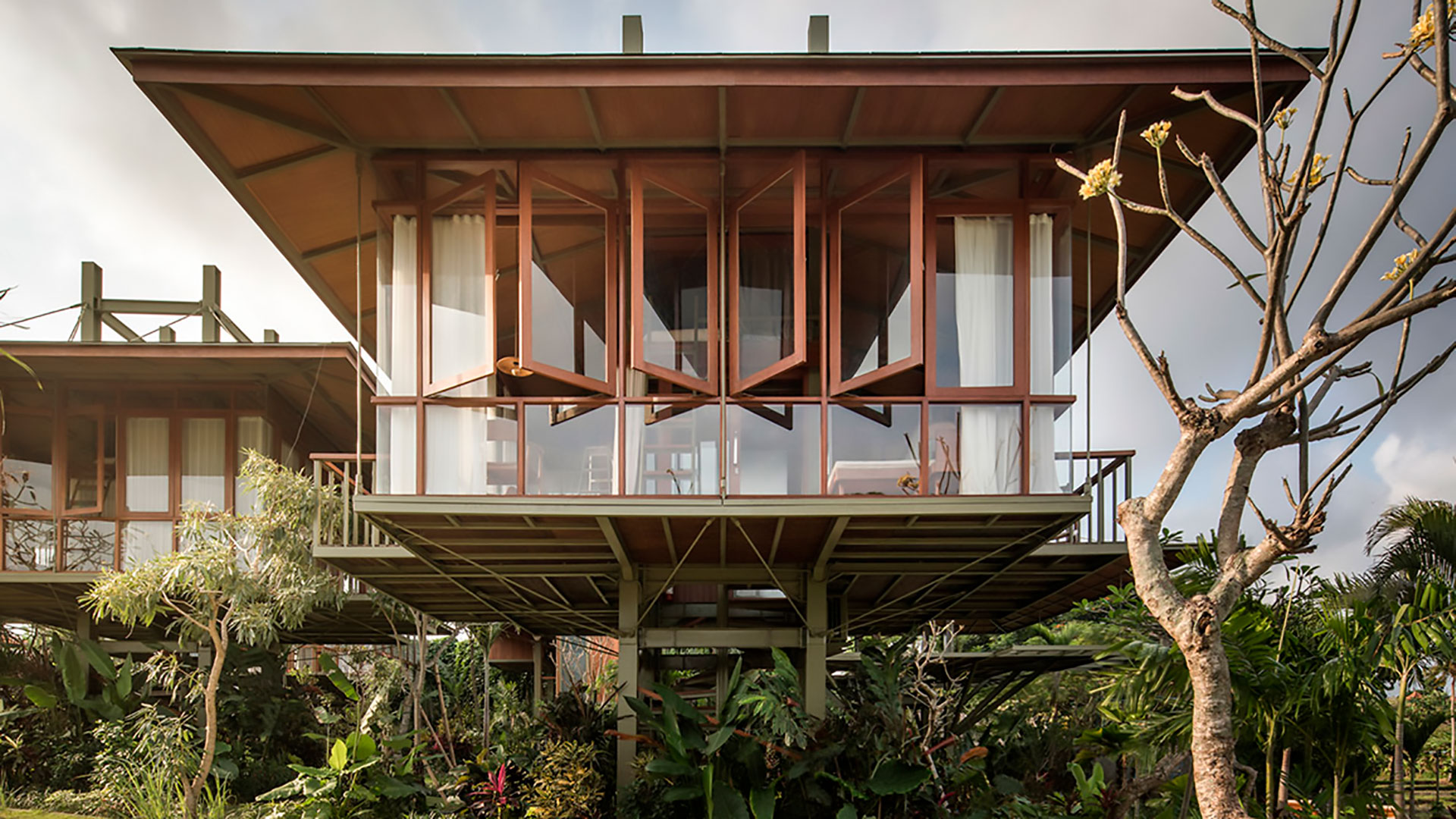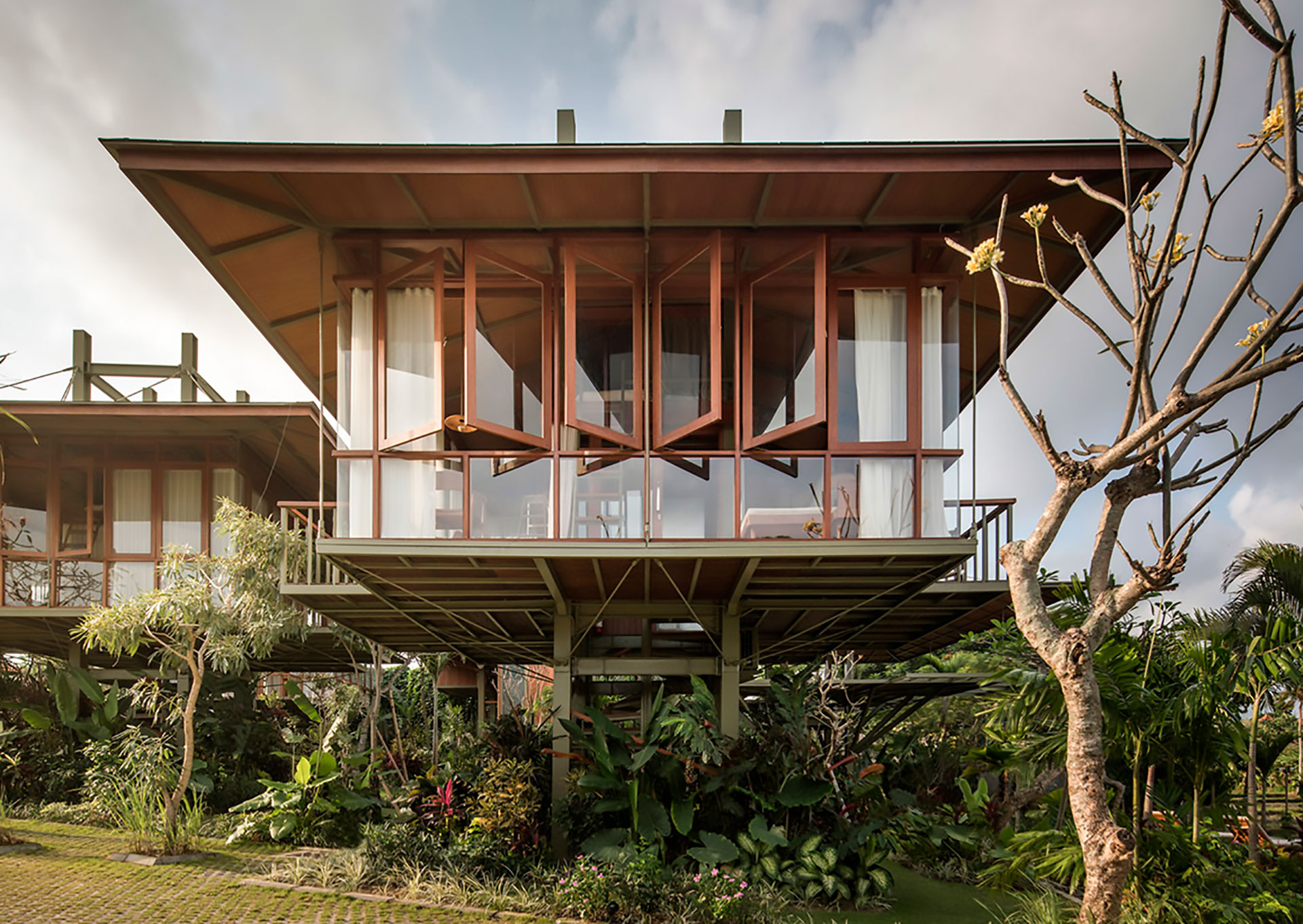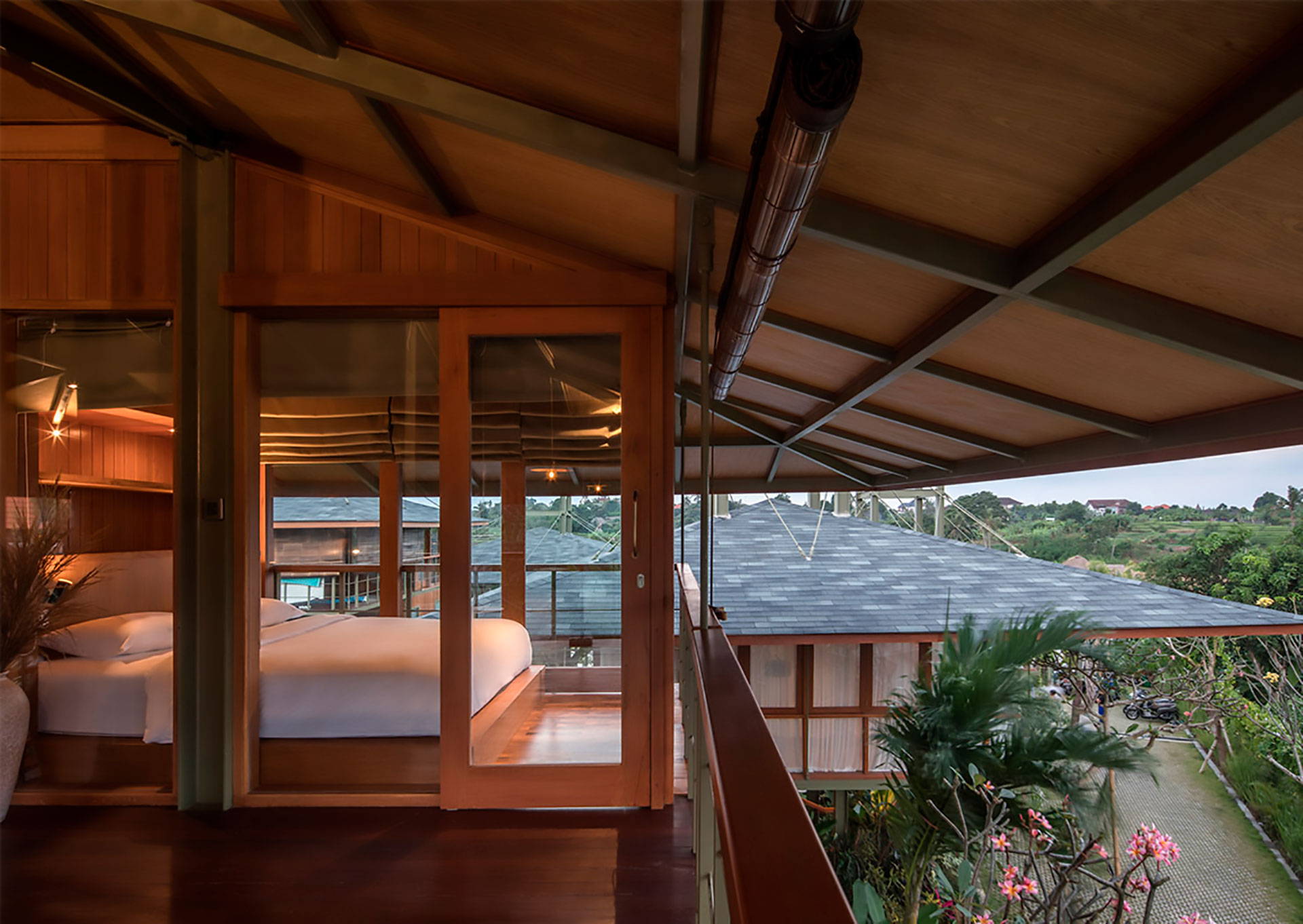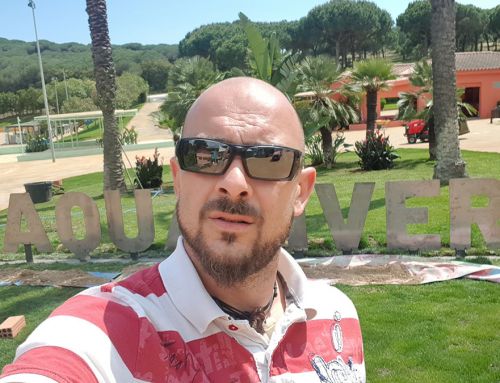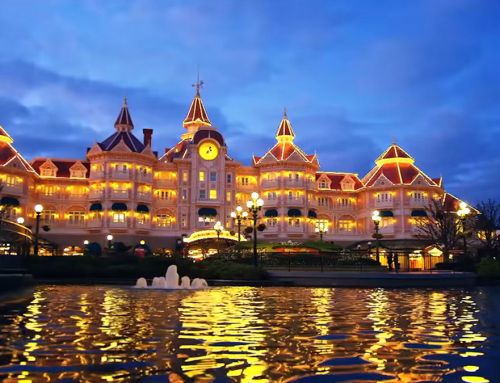In a project with conceptual status, Bali-based German architect Alexis Dornier has come up with an interesting system of prefabricated modular-houses on stilts. According to the text accompanying the project, these “studios” are an innovative response to “the current situation in Bali, where buildings are often constructed and demolished shortly afterwards because the land is often rented out for short periods of time”.
Dornier’s response takes the form of modular prefabricated houses, easily dismantled and moved from one geographical location to another, a system of maximum flexibility in a rapidly evolving real estate market. With 17,000 islands, the idea is certainly appropriate for the Indonesian archipelago. Beyond the design and its obvious appeal, the fact that the buildings have been conceived as a means for sustainable tourism development adds a point of interest to the project.
Indeed, in terms of sustainability, by being founded on stilts, the houses have minimal impact on the land. On the other hand, they allow families to use the land for cultivation or as a green leisure area. At the same time, the roofs and wide overhang can integrate solar panels, as well as serving as rainwater harvesting surfaces for later reuse. In addition to all this, natural ventilation is facilitated by the elevation above the ground, as well as by the large windows and large doors.
The project also assumes the need to keep costs low, a circumstance to which its conception as prefabricated modular buildings contributes. Built on steel piles, their modularity allows for various configurations, with one or two storeys, according to the needs and possibilities of each family. It also facilitates iteration for use in the tourist-apartment rental industry, or for the development of temporary resorts with a minimal carbon footprint. They can also be built in difficult terrain and remote areas, without the need for large resources, significant earthworks or great amounts of energy, thus becoming factors of sustainable development and revitalisation for the local economy.
Undoubtedly, this is a project of great architectural value for the beauty of its units, for its sustainability and for the numerous opportunities it offers to the tourism and real estate sector, not only in Bali, but also in the rest of the world.
RELATED STORIES
Newsletter

